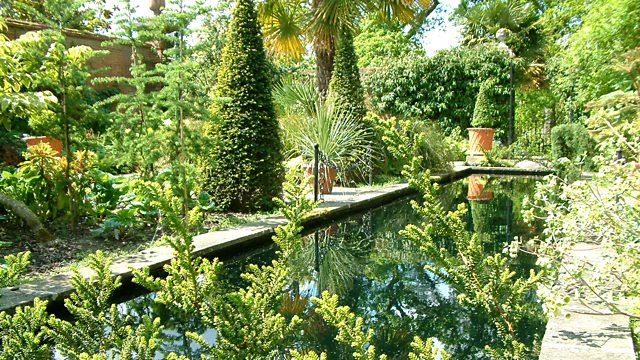Somerset
Peter Gibbs hosts the horticultural panel programme from Somerset. Taking questions from local gardeners are Bob Flowerdew, Anne Swithinbank and Christine Walkden.
Peter Gibbs hosts the horticultural panel programme from Chard, Somerset. Bob Flowerdew, Anne Swithinbank and Christine Walkden answer the audience questions.
Produced by Victoria Shepherd
Assistant Producer: Darby Dorras
A Somethin' Else Production for 主播大秀 Radio 4
This week's questions and answers:
Q: Does the panel have any tips for garden designs that will keep colour in the garden all year round?
A. If you visit a garden centre every month, you will see what is flowering throughout the year. This will help you plan twelve months of colour. In terms of creating structure and colour throughout the winter months, try planting Vibernum bodnantense or the Vibernum farreri. These will flower from late autumn up until the Christmas period. Hamamelis (Witch Hazel) will flower in January and Edgeworthia (Japanese Paper Bush) will flower in February. The Cherry tree, Prunus inciser kojo-no-mai flowers in March.
Q. What is the best way to use Comfrey juice?
A. Water it down (one cup per watering can) and use it to feed tomato plants and any other plants that do well with potash. Other plants may start to yellow due to the high concentration of potash and so balance with a rotted-down Borage juice as this is high in other minerals such as magnesium. For a general-purpose feed, mix the rotted down juice of Borage, Comfrey and Stinging Nettle.
Q. What is the best way to grow Sweet Peas in pots?
A. Use a large pot filled with good compost. Keep quite dry until the plants form buds and then water very frequently. Keep dead heading to encourage a longer period of flowering.
Q. Could the panel recommend a hardy grape vine that produces seedless grapes for eating rather than wine making? The garden has a slightly acidic soil and is 200 meters above sea level.
A. Flame grapevines do well in green house conditions or planted against a wall that gets a lot of sun.
Q. What is the green powdery substance covering my plants and is it necessary to get rid of it?
A. It is probably an alga and is harmless. It's actually an indication of good growing conditions so enjoy it!
Q. What advice would the panel recommend for preventing garden volunteers snipping away at shared gardens?
A. Give your volunteers rooted cuttings to take away. Confiscate the secateurs!
Q. Last winter uprooted many of the Conifers in our woodland garden. What is the 'greenest' way to deal with the fallen trees?
A. Leave the trees lying there; this would be excellent for wildlife. If you do want to clear the trees, chip what you can and use this as mulch or leave it in a pile for three years to make slightly acidic compost. You could also burn the wood and return the ash to the soil.
Q. How are the Moth Orchids I grow in my window boxes propagated?
A. They are propagated in test tubes using micro-propagation techniques to create hybrids. But at home, if you feed the Orchids and get the water balance right, the flower spikes will start forming little plants called keikis which you can detach and grow. If you want to bulk up the growth, you could plant in some Oncidiums or Cymbidiums.
Q. How can we replenish out stocks of Charm Chrysanthemums?
A. Get in touch with the National Plant Collector and see if they can help. You could also try contacting Wisley Garden as they once had a very good collection.
Q. What can we plant for colour in mid to late summer to compliment blue Hydrangeas?
A. Aleniums and Inulas would work well, as would Dahlias such as the Bishop of Llandaff. You could try Hesperantha or a Gladioli. Astranthias (particularly the Abby Road variety) are pretty and would work well with Hydrangeas. Put some ferns in to fill in the gaps. Crinums are a great pink colour, and Nerines would also work well.
Q. What garden trends do the panel predict?
A. We might go back to mixed borders and inter-planting. Topiary is also making a comeback. There is an increased interest in coloured foliage, such as Heucherellas, Brunneras, the Tiarellas and the Epimediums.
Last on
More episodes
Previous
Next
Broadcasts
- Fri 6 Jun 2014 15:00主播大秀 Radio 4
- Sun 8 Jun 2014 14:00主播大秀 Radio 4
Six of GQT鈥檚 naughtiest gardening innuendos
When Gardeners' Question Time got mucky.
Podcast
-
![]()
Gardeners' Question Time
Horticultural programme featuring a group of gardening experts


